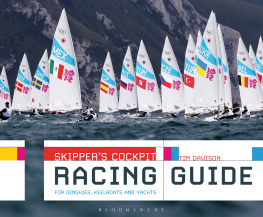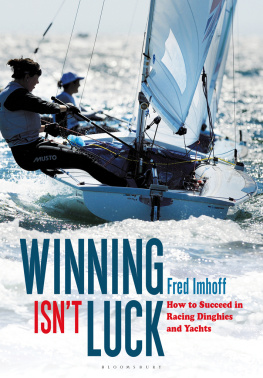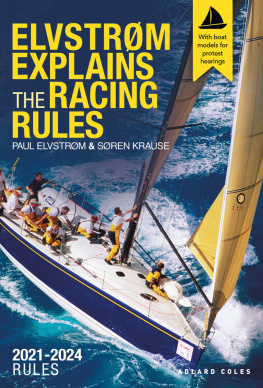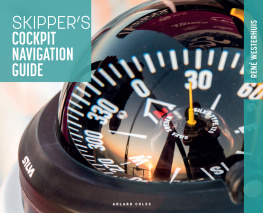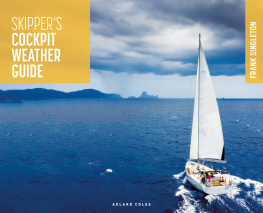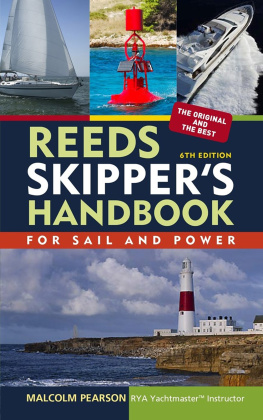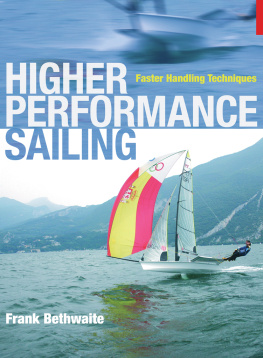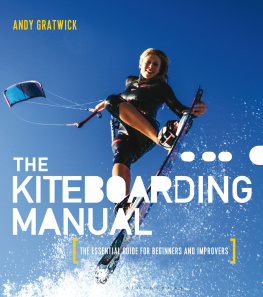Contents
This electronic edition published in 2014 by Bloomsbury Publishing Plc
Published by Adlard Coles Nautical an imprint of Bloomsbury Publishing Plc 50 Bedford Square, London WC1B 3DP
www.adlardcoles.com
Copyright Tim Davison 2014
First published by Adlard Coles Nautical in 2014
ISBN 978-1-4729-0031-9
ePDF 978-1-4729-0033-3
ePub 978-1-4729-0032-6
All rights reserved
You may not copy, distribute, transmit, reproduce or otherwise make available this publication (or any part of it) in any form, or by any means (including without limitation electronic, digital, optical, mechanical, photocopying, printing, recording or otherwise), without the prior written permission of the publisher. Any person who does any unauthorised act in relation to this publication may be liable to criminal prosecution and civil claims for damages
The right of the author to be identified as the author of this work has been asserted by him in accordance with the Copyright, Designs and Patents Act, 1988.
Note: while all reasonable care has been taken in the publication of this book, the publisher takes no responsibility for the use of the methods or products described in the book.
To find out more about our authors and their books please visit www.bloomsbury.com where you will find extracts, author interviews and details of forthcoming events, and to be the first to hear about latest releases and special offers, sign up for our newsletters here.
Bloomsbury is a trade mark of Bloomsbury Publishing Plc
This guide outlines a structured approach to racing dinghies and yachts. It will help you set your goals and take the necessary steps to achieve them.
To begin with, you will need to put together a fast boat with gear that is simple and works well (see ).
When you have speed and manoeuvrability, you are ready to race. Youll quickly find you need to know the rules (see ).
At the end of each race it is important to analyse what happened, then work on your weak points (see ). That way you will gradually progress to the front of the fleet, and your early success will spur you on.
The joy of racing: close competition in identical boats.
How well do you want to do? I have some friends who drift round the course every Sunday, perfectly happy to finish last. Others are determined to do well, while a few (not quite so friendly) types have an insatiable desire to win and even aspire to an Olympic medal.
Any of these is a sensible objective, provided you have thought about it, will be happy if you achieve it and accept the implications in terms of time, fitness and money.
Goal setting
Youre more likely to achieve your objective if you plan where youre going using long-term, medium-term and process goals.
First, set your long-term goal. It might be one of these:
To have fun
To get round the course
To win a club race
To win an open meeting
To win the National Championships
To win an Olympic medal
Write down the long-term goal, then forget it! You can only reach your dream by breaking it into smaller steps (medium-term goals), and then breaking these into their building blocks (process goals). The idea is that if you concentrate on the process goals, which are the ones in your direct control, the others will take care of themselves.
Work first on a goal in an area where you are weakest, then on your next worst area, and so on.
SMART
Each goal must be SMART: Specific, Measurable, Attainable, Relevant, Time-phased. The table shows how this relates to the process goal of gybing.
Aim | Example |
S | Specific | In light air I want to do five good gybes, one after the other. |
M | Measurable | Did I come out of each gybe with speed? |
A | Attainable | I think thats possible, after an hours practice. |
R | Relevant | Our gybing was rubbish last week. |
T | Timephased | I will practise this on Saturday afternoon. |
First steps
If youre new to racing, choose your class carefully.
Think about your body weight. If you want to helm a 470 you need to be as light as possible, 79 kg is ideal for a Laser, 95 kg for a Finn, and so on. If you are the wrong weight for the boat the dice are loaded against you from the start.
You wont learn much from handicap racing because youre not pitting yourself against the other boats in real time. Its better to look for a local club that has a good fleet of your chosen class.
Join the club and spend time looking at the fast boats and talking to their crews. You will be amazed how helpful people are. Join the class association, which will also put you in touch with enthusiasts. Try to borrow several boats and take them for a spin. Now you should have some idea of the sort of boat and gear youre looking for.
Finding the right boat
There are several options:
Buy a fast second-hand boat, e.g. one that did well in last years championships. This is my preferred option when joining a new class. The boat will be well sorted out and the owner happy to tell you how to set it up for various conditions until you start beating him!
Buy a new boat; with new sails and a hull that is smooth and light. The disadvantage is that you will have to set up the rig from scratch, and you will wear out the new sails while learning.
Buy an unsuccessful boat and renovate it. This is obviously the cheapest option, and may be successful if you enjoy working with tools and have a clear view of whats wrong with the boat and how to rectify it.
Getting the boat up to speed
Well now look at what is known in the trade as free speed. (A bit of a misnomer actually, because you can spend a lot of cash on this.) The idea is that anything that can be done in advance to help you win should be done. Then all you have to do on the racecourse is to make a perfect start, get in tune with the wind and waves, sail faster than the opposition and take the gun!
You can do the work yourself if you are handy, but I prefer to take the boat to a boat builder and have him do it properly. He has manpower, all the bits in stock, the top splicing gear to hand and so on, and can revolutionise your boat in a day or two.
Hull weight
Even 3 kg over the design weight will hold a dinghy back in marginal planing conditions. Put your dinghy on two bathroom scales to check, and take bits off until you are on the limit (for example, change your metal boom or mast for carbon, cut down the central thwart or replace heavy shackles for lighter ones). Then turn the boat over and spend time on the finish. Sand, paint and polish until the hull is fair and smooth. Then do the same with the centreboard/keel and rudder, making sure they have the classic profile, like a spitfire wing. If in doubt, buy new foils they are as important as the sails.
For a yacht the smoothness of the hull is even more important. Take the boat out of the water in between races if possible, to keep the bottom clean.

